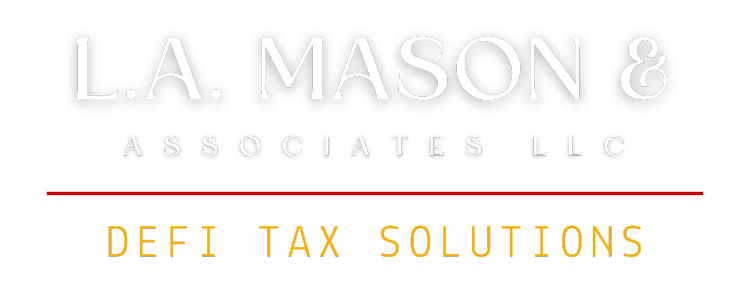Business Transition Made Easy: Your Comprehensive Succession Checklist
Running a successful business is a tremendous accomplishment, but what happens when it’s time to pass the torch? At some point, every business owner must consider the future and plan for a smooth transition. Whether you’re looking to retire, pass the business to a family member, or sell it to a new owner, proper succession planning is essential.
Safeguard your legacy, ensure continuity, and set the stage for a prosperous future. Business succession planning is a critical process that ensures the smooth transition of your company to the next generation of leaders. In this blog, “Passing the Torch: A Comprehensive Checklist for Business Succession Planning,” we’ll provide you with a detailed checklist to guide you through this complex but essential endeavor.
How Do I Choose the Right Successor?
Choosing the right successor involves a combination of factors, including skills, experience, and alignment with the company’s values and vision. Consider seeking professional advice to make this crucial decision.
What Happens to My Role After the Transition?
Your level of involvement after the transition can vary. Some business owners choose to stay on in an advisory role, while others may fully retire. The decision is based on your objectives and the needs of the business.
- Determine Your Goals and Objectives. Begin by defining your goals for the transition. Before diving into the logistics, clarify your goals and objectives for the succession. What do you want to achieve? Are you looking to preserve family ownership, maximize the value of the business, or ensure continuity? Do you want to sell the business, pass it to a family member, or appoint a successor from within the company? Your objectives will shape the entire succession plan.
- Identify and Develop Successors. Identify potential successors within your organization or family. Select and groom a successor who possesses the skills, knowledge, and leadership qualities required to run the business effectively. This could be a family member, a key employee, or an external candidate. Provide them with the necessary training and development opportunities to ensure they’re prepared to take on leadership roles.
- Create a Business Valuation. Determine the fair market value of your business. Conduct a thorough financial analysis of the business to determine its value. This is crucial for negotiations and to ensure you receive a fair price for your business. A professional valuation can help set a realistic selling price and is essential for estate planning and tax purposes.
- Communication Plan. Develop a communication plan for informing stakeholders, employees, and customers about the succession plan. Open and transparent communication is key to a smooth transition. Consider how the transition will affect your employees. Communicate the changes transparently and create a plan for retaining key employees during the transition.
- Customer and Vendor Relationships. Address how the transition will impact customer and vendor relationships. Ensure a seamless handover of responsibilities to maintain these vital connections.
- Document Key Processes. Document critical business processes, systems, and contacts. Document all critical business processes, from operations to customer management. This ensures a smooth transition and minimizes disruptions during the changeover. This information is invaluable for the incoming leadership team.
- Insurance and Risk Management. Review your insurance coverage and risk management strategies. Ensure that the business is adequately protected during and after the transition.
- Review Your Estate Plan. Ensure that your estate plan aligns with your succession goals. This includes updating your will, trusts, and other estate planning documents.
- Establish a Succession Timeline. Set a clear timeline for the transition. This helps create a sense of urgency and accountability among all parties involved.
- Legal and Financial Due Diligence. Engage legal and financial professionals to conduct due diligence on your business. Address any legal or financial issues that could affect the succession.
Navigating the Transition
Successfully transitioning a business requires careful planning and execution:
- Timeline. Create a timeline that outlines all the necessary steps, from selecting a successor to the final handover. Stick to the schedule to ensure a smooth transition.
- Open Communication. Maintain open and honest communication with all stakeholders, including employees, customers, and vendors. Transparency can ease concerns and build trust.
- Contingency Planning. Prepare for unexpected events that could disrupt the transition, such as health issues or economic downturns. Having contingency plans in place can prevent setbacks.
Navigating Family Dynamics
Succession planning within a family business often involves complex family dynamics:
- Facilitate Family Meetings. Hold regular family meetings to discuss the succession plan, address concerns, and ensure everyone is on the same page.
- Set Clear Roles and Expectations. Define the roles and responsibilities of family members within the business. Ensure that expectations are clear and reasonable.
- Consider Non-Family Leadership. In some cases, it may be beneficial to bring in non-family leadership to maintain objectivity and business continuity.
Navigate the complexities of business succession with confidence.
Transitioning a business is a significant step that requires careful planning and consideration. By following this comprehensive checklist, you can ensure that your business is well-prepared for a smooth transition, protecting your legacy, employees, and the future of your company. Whether you’re passing the torch to a family member or selling to a new owner, proper succession planning is the key to a successful transition.
Succession planning is not just about ensuring the continuity of your business; it’s about preserving your legacy and setting the stage for a prosperous future. Your careful planning will not only benefit the business but also provide stability and security for your family and employees as you pass the torch to the next generation of leaders.
Ready to secure the future of your business? Explore our comprehensive succession planning solutions to get started on a path to a seamless transition.






